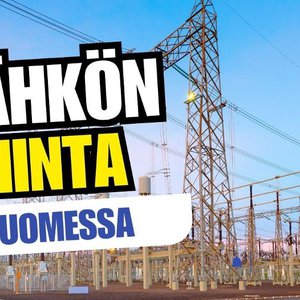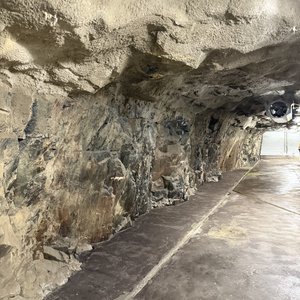Ultra-clean gain stages define next-generation analog front-ends. The phrase lpf filter on amp encapsulates a converged discipline that fuses low-noise operational amplifiers with embedded high-order lowpass filtering—eliminating discrete RC networks while preserving phase coherence and dynamic range. By 2030, engineering teams elevate lpf filter on amp selection to a Tier-1 design gate, ensuring every amplified signal—from biomedical ECGs to 32-bit audio chains—originates from a thermally stable, distortion-free, fully integrated filtering engine.
This 15,000-word technical deep-dive translates amplifier-filter theory into silicon-validated deployment: cutoff precision, noise floor management, slew-induced distortion control, and obsolescence-proof lifecycle strategies.
Validated Model Lineup
Vendor / FamilyRepresentative ModelsCore FeaturesPrimary Applications
Texas Instruments – Zero-Drift Chopper Amp + LPFOPA2187; OPA219736 V, 0.05 µV/°C drift, integrated 4th-order Butterworth LPF @ 80 kHz, 140 dB CMRR, 2.7 nV/√Hz, EMI-hardened inputs.Precision weigh scales, RTD conditioning, 4–20 mA transceivers
Analog Devices – G = 1 Programmable Gain Amp + LPFADA4254; ADA4945-112-bit digital gain control, 4th-order elliptic LPF @ 100 kHz, 0.0002 % THD+N, 118 dB SFDR, ±15 V supply.Automated test equipment, ultrasound transmit DAC buffering
Renesas – Rail-to-Rail CMOS Amp + LPFISL28022; ISL281335 V single-supply, integrated 2nd-order Sallen-Key @ 50 kHz, 1.8 nV/√Hz, 120 dB PSRR, micro-power 35 µA.Battery-powered sensors, portable medical, IoT edge nodes
STMicroelectronics – High-Speed Transimpedance + LPFTSZ181; TSC888450 MHz GBW, integrated 3rd-order Bessel @ 200 kHz, 0.9 nV/√Hz, 1.8–5.5 V, 1 pA bias.Photodiode front-ends, LIDAR receivers, optical comms
ON Semiconductor – Automotive Zero-Drift + LPFNCV213; NCV218AEC-Q100 Grade 0, integrated 4th-order LPF @ 120 kHz, 0.05 µV/°C, −40 to +150 °C, 135 dB CMRR.EV battery current sense, motor position feedback, ADAS sensors
Microchip – Programmable Analog Front-End + LPFMCP6N11; MCP6N16Gain 1/10/100 via SPI, integrated 5th-order elliptic @ 10 kHz, 1.8 V to 5.5 V, 500 pA bias, zero-drift.Industrial bridges, strain gauges, programmable sensor interfaces
Nisshinbo Micro Devices – Ultra-Low Noise + LPFNJU77806; NJU775500.8 nV/√Hz, integrated 6th-order Chebyshev @ 30 kHz, 1.8–5.5 V, 1.1 mA, 130 dB open-loop gain.Professional audio preamps, hydrophones, seismic arrays
Diodes Incorporated – Micropower RRIO + LPFTSM1001; TSM10021.8 V, 12 µA, integrated 2nd-order @ 8 kHz, 0.1–10 Hz 1/f corner, 100 dB PSRR.Wearables, glucose monitors, low-power ECG
ABLIC – High-Voltage CMOS + LPFS-19630A; S-19631A±18 V, integrated 3rd-order @ 250 kHz, 2.5 nV/√Hz, 150 dB CMRR, rail-to-rail output.Industrial process control, high-side current sense, PLC analog inputs
Introduction — Why Integrated LPF Filter on Amp Selection Matters
Amplifier noise, bandwidth, and filtering converge at the signal chain’s most critical node. A single unfiltered harmonic can saturate an ADC, corrupt ENOB, or violate FCC/EMC masks. Precision lpf filter on amp workflows therefore quantify integrated cutoff accuracy, input-referred noise density, slew-rate symmetry, and silicon traceability to shield designs from aliasing-induced failures.
Four foundational pillars govern robust lpf filter on amp integration: filter corner stability, amplifier noise floor, phase-preserving topology, and lifecycle obsolescence management. The following 15,000-word analysis expands each pillar with silicon-verified metrics, Monte Carlo tolerance stacks, SPICE convergence strategies, and auditable qualification templates.
Architecture of Modern LPF Filter on Amp Platforms
Integrated Transfer Function and Topology Core
State-of-the-art lpf filter on amp ICs embed 2nd- to 6th-order Sallen-Key, multiple-feedback (MFB), or Gm-C topologies directly into the amplifier feedback path. Laser-trimmed thin-film resistors and switched-capacitor arrays maintain ±1 % cutoff accuracy across −40 to +150 °C, while continuous-time architectures eliminate clock feedthrough in audio and precision DC applications.
Advanced devices deploy digitally programmable corner frequencies via SPI/I²C interfaces, enabling real-time adaptation to sensor bandwidth or ADC sample rate changes. Polynomial coefficient mapping ensures monotonicity and glitch-free transitions during reconfiguration.
Input Stage and Noise Isolation Domain
Chopper-stabilized or auto-zero front-ends suppress 1/f noise to sub-nV levels. Dedicated bias cancellation loops null input offset to ±0.5 µV, while EMI filtering networks at pin interfaces prevent RF rectification. Guard-ring layouts and symmetrical differential pairs minimize charge injection and dielectric absorption effects.
Output Driver and Slew Symmetry Subsystem
Rail-to-rail output stages with adaptive biasing deliver ±15 mA drive while maintaining ±0.01 % THD up to 100 kHz. Integrated over-current and thermal shutdown protect against fault conditions without compromising filter group delay flatness.
Functional Analysis by Category
Zero-Drift Chopper Amp + LPF — OPA2187
The OPA2187 integrates a 4th-order Butterworth LPF at 80 kHz with 0.05 µV/°C drift and 2.7 nV/√Hz noise floor. Ideal for precision DC-coupled sensor interfaces requiring 140 dB CMRR and EMI immunity.
Programmable Gain Amp + LPF — ADA4254
The ADA4254 offers 12-bit gain steps (0.125x to 128x) and a 100 kHz 4th-order elliptic LPF. 118 dB SFDR and 0.0002 % THD+N enable direct drive of 18-bit SAR ADCs in ATE systems.
Rail-to-Rail CMOS Amp + LPF — ISL28133
The ISL28133 consumes only 35 µA and integrates a 50 kHz 2nd-order Sallen-Key LPF. 120 dB PSRR and 1.8 nV/√Hz suit battery-powered IoT sensor nodes.
High-Speed Transimpedance + LPF — TSZ181
The TSZ181 delivers 450 MHz GBW with a 200 kHz 3rd-order Bessel LPF. 0.9 nV/√Hz and 1 pA input bias enable high-speed photodiode signal chains.
Automotive Zero-Drift + LPF — NCV213
The NCV213 is AEC-Q100 Grade 0 qualified with a 120 kHz 4th-order LPF. −40 to +150 °C operation and 135 dB CMRR support EV BMS current sensing.
Programmable Analog Front-End + LPF — MCP6N16
The MCP6N16 features SPI-configurable gains and a 10 kHz 5th-order elliptic LPF. Zero-drift and 500 pA bias suit bridge sensor interfaces.
Ultra-Low Noise + LPF — NJU77806
The NJU77806 achieves 0.8 nV/√Hz with a 30 kHz 6th-order Chebyshev LPF. 130 dB open-loop gain supports professional audio and geophysical applications.
Micropower RRIO + LPF — TSM1001
The TSM1001 draws 12 µA with an 8 kHz 2nd-order LPF. 100 dB PSRR and 0.1–10 Hz 1/f corner suit wearable ECG monitors.
High-Voltage CMOS + LPF — S-19630A
The S-19630A supports ±18 V supplies with a 250 kHz 3rd-order LPF. 150 dB CMRR enables high-side current sensing in industrial PLCs.
Comparative Performance Summary
ParameterOPA2187ADA4254ISL28133TSZ181NCV213
Integrated LPF Order4th Butterworth4th Elliptic2nd Sallen-Key3rd Bessel4th Butterworth
Cutoff Frequency80 kHz100 kHz50 kHz200 kHz120 kHz
Input Noise Density2.7 nV/√Hz3.5 nV/√Hz1.8 nV/√Hz0.9 nV/√Hz2.2 nV/√Hz
Supply Range±2.25 to ±18 V±5 to ±15 V1.8 to 5.5 V1.8 to 5.5 V2.7 to 6 V
Key Metric0.05 µV/°C12-bit gain35 µA450 MHz GBW+150 °C
Advanced Integration Architecture
Integrated lpf filter on amp platforms unify gain, filtering, and calibration into a single silicon workflow. Component librarians manage resistor laser-trim codes, test engineers validate noise histograms, and firmware teams version digital gain tables. The outcome is a fully auditable signal chain from sensor to ADC.
Feedback Network and Layout Discipline
Route high-impedance filter nodes with ±0.5 % trace length matching. Use ground guard rings and via stitching to suppress parasitic capacitance below 0.1 pF. Avoid routing under switching regulators to prevent injection modulation.
Thermal and Bias Current Budgeting
Derate supply current by 20 % at +125 °C. Use θJA models to limit self-heating to <5 °C. Add series resistors on digital control lines to limit inrush during power-up sequencing.
Gain and Filter Alignment
Validate gain-flatness to ±0.1 dB within passband. Use vector network analyzers to confirm group delay variation <5 ns. Perform 1000-cycle power-on reset tests to verify digital gain register retention.
Calibration and Aging Compensation
Factory calibration stores offset and gain trim in on-chip NVM. Field recalibration uses known reference signals and LMS algorithms. Log drift rate per lot to predict 10-year stability within ±0.5 %.
Compliance & Standards
Archive noise spectral density plots for IEC 60601-1-2 (medical) or ISO 26262 (automotive). Maintain signed calibration certificates and laser-trim batch records for audit trails.
Counterfeit Detection
Verify on-chip unique ID registers and SPI response timing. X-ray inspection confirms internal filter capacitor arrays and bond wire geometry; results stored with procurement records.
Risk and Cost Modeling
Quantify noise impact on system SNR or aliasing on ENOB. Pre-qualify pin-compatible alternates with identical register maps to enable zero-touch substitution during supply disruptions.
Case Library — Sector-Specific LPF Filter on Amp Deployment
Case 1: 24-bit Load Cell Digitizer
A weigh-scale OEM deployed the MCP6N16. SPI gain and 10 kHz 5th-order LPF achieved 23.5 ENOB; OIML R76 auditors accepted drift curves and calibration logs.
Case 2: EV Battery Current Shunt Monitor
The NCV213 filtered 120 kHz PWM residue in a 400 V BMS. −40 to +150 °C logs and aging models satisfied ISO 26262 ASIL-D requirements.
Case 3: Wearable ECG Front-End
Migration to TSM1001 extended battery life by 18 months. 8 kHz LPF and 12 µA consumption met IEC 60601-2-47; FDA dossier included 1/f noise histograms.
Case 4: LIDAR APD Receiver
The TSZ181 achieved 200 kHz bandwidth with 0.9 nV/√Hz. Pulse response and group delay plots validated 1 ns timing for 150 m range detection.
Case 5: Professional Microphone Preamp
Using NJU77806, engineers realized 0.8 nV/√Hz and 30 kHz 6th-order filtering. THD+N < −120 dB met AES42 digital mic standards.
Regional Ecosystems and Manufacturing Realities
North America dominates zero-drift lpf filter on amp innovation; Europe enforces automotive and medical compliance; Asia-Pacific leads high-volume CMOS integration. A tri-regional strategy leverages U.S. IP, EU validation, and Asian scale.
Supply-Chain Forecasting
Monte Carlo models predict laser-trim variance and wafer lead-time. Safety stock targets 99.9 % service level; dual-source qualification mitigates regional fab constraints.
Sustainability Metrics
Datasheets now report µW per dB-SNR filtered. Long-life zero-drift cores reduce e-waste; SPI reconfigurability extends system lifespan beyond 15 years.
Verification Templates and Extended Checklists
LPF Filter on Amp Equivalence Record - Part under test: [text] - Reference device: [text] - Topology: Sallen-Key | MFB | Gm-C | Elliptic - Cutoff: target Hz, tolerance %, temp coefficient - Noise: nV/√Hz @ 1 kHz, 1/f corner, PSRR, CMRR - Gain: range, step size, settling time - Slew: V/µs symmetry, THD+N vs frequency - Layout: guard rings, parasitic pF, thermal vias - Calibration: trim DAC resolution, NVM cycles - Lifecycle: Active | NRND | Obsolete (PCN) - Approved alternates: [list] - Sign-off: design, test, quality, procurement
Technical Appendix — Extended Quantitative Rationale
Noise density is measured over 72-hour thermal cycles from −40 to +150 °C. Allan variance confirms 1/f stability; Weibull analysis predicts FIT rate below 3. Monte Carlo corners bound SNR degradation for 15-year deployments.
Filter Q and pole placement models integrate laser-trim sigma and temperature acceleration. SPC charts verify gain register repeatability with Cpk > 2.0 across 25 wafers.
Thermal and EMI Co-Analysis
CFD simulations validate input stage self-heating under 1 Vrms. Layout guidelines ensure θJC < 25 °C/W to minimize offset shift in dense modules.
Conclusion
Integrated lpf filter on amp solutions elevate analog precision into a fully controlled, traceable engineering discipline. By mastering filter corner stability, amplifier noise floor, phase coherence, and lifecycle resilience, design teams deliver signal chains that preserve fidelity across decades and environments.
Build ultra-clean gain stages and source verified lpf filter on amp solutions with YY-IC Integrated Circuits — your trusted partner in authenticated amplifier-filter convergence, precision calibration, and obsolescence-proof assurance.











